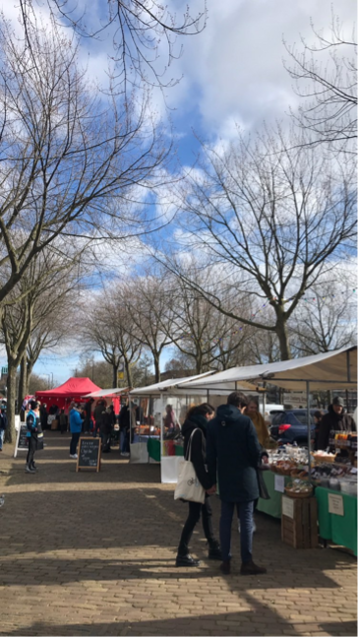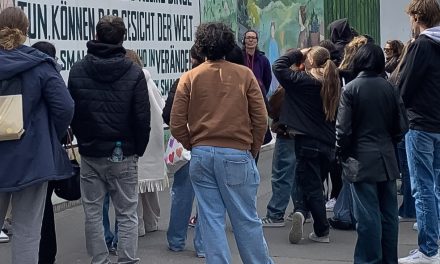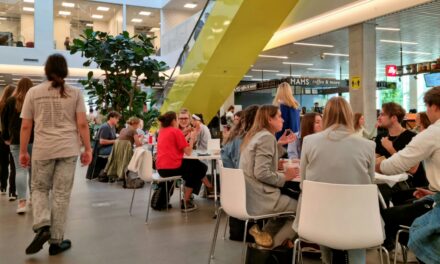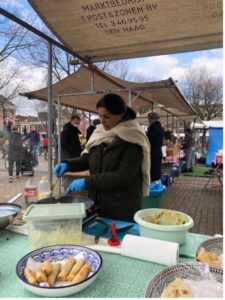
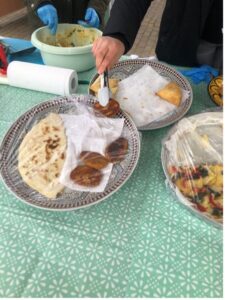
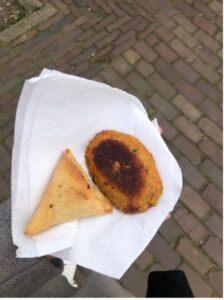
From left to right; The first picture shows a lady who is preparing food. The second picture gives an image of products she is selling. The third picture are the products I have bought at her stand. She has told me that all the products she is selling are home made.
Why are more people starting to eat and buy locally?
Currently the buying local movement is rapidly growing, one of the reasons for this is of course the corona virus and the negative travelling advice. Next to this it appeals to many people due to health benefits and their support to local farmers and growers. In this way the money spend stays in the local economy. Customers see it as their support to acquaintances and friends. In addition, eating and buying local is becoming trendier and even restaurants are getting involved.
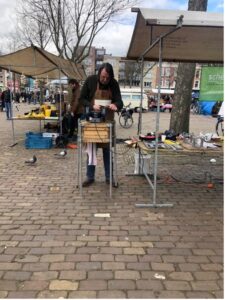
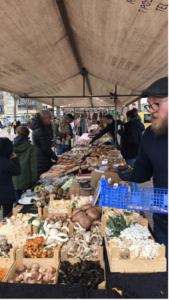
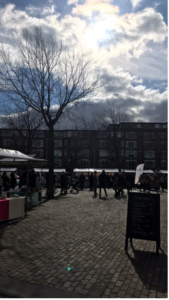
From left to right; On the first picture a gentleman is sharpening skates, he has a whole stand with supplies for this. On the second picture you can see the mushroom stand. The third picture gives an overall image of the farmers market.
How is buying local perceived?
Lena Basista who is an event coordinator of multiple food festivals in the West-Zeeuws Flemish region in the Netherlands gives her view on buying local products and the impact it has on the designated area. For her the meaning of buying local is that the products that are sold on a festival or local farmers market are also produced in that same region. She adds that buying local also can be seen as made in Holland. During the festivals she organizes she sees that buying local is becoming more and more trendy. People are seeing it as a kind of luxury, the products that they are buying are handcrafted. It is made with more attention and love, and therefore in the eyes of the consumer more valuable. Every year she sees the number of applicants for the festivals rising. Therefore, it can be assumed that more people are starting with producing local products and are wanting to share this with their communities. Buying local has also its benefits on the environment. The cycle a products travels becomes smaller, and therefore, less emissions of car, trains or ferries are ejected.
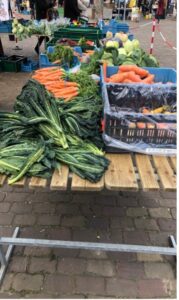
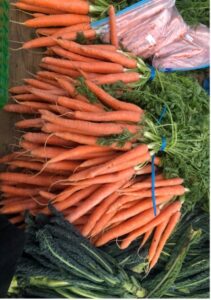
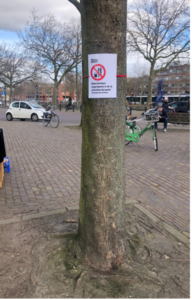
From left to right; The first picture gives an image of the overall vegetable stand. The second picture is a close up of the carrot collection. The third picture is warning plate to keep your distance at the market.
Local products for restaurants
Restaurants in a higher price range are according to Lena also reaching out to more local products and ingredients. They try to create a whole experience with local grown vegetables, herbs, meat, and fish for example for their guests. These dining experiences are getting more and more wanted by the public. According to Lena, even Belgium guests are crossing the border to experience our Dutch products.
The downside of buying local
Buying local is for the middle class most of the time perceived as expensive. Lena agrees with this, she says that most of the people that are visiting the festivals or farmers markets in her region are people that are wealthier than the middle class. Another downside is that not all the ingredients are locally available, and this can limit the possibilities for restaurants or home chefs for example.
In the end it would be the best for restaurants to combine buying local with products that are not locally produced. For the regular consumer buying local or going to the farmers market can be seen as a special occasion.
